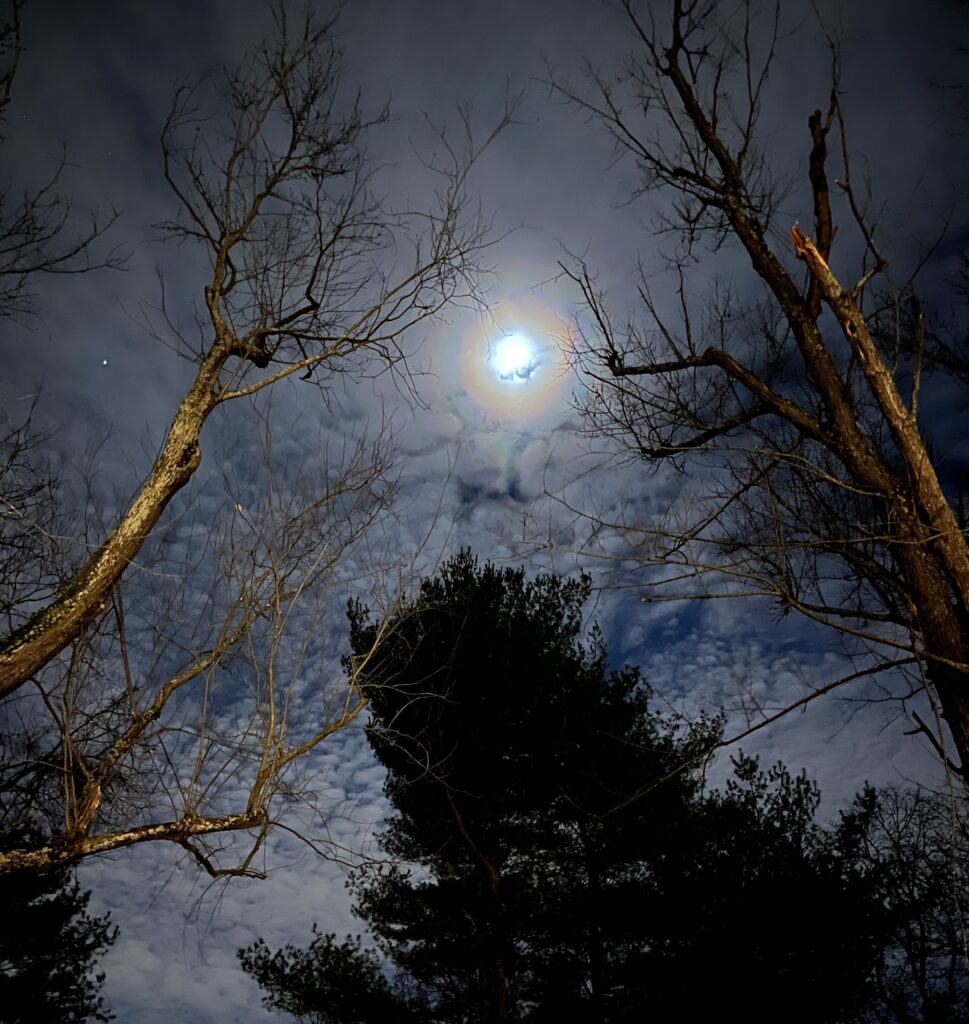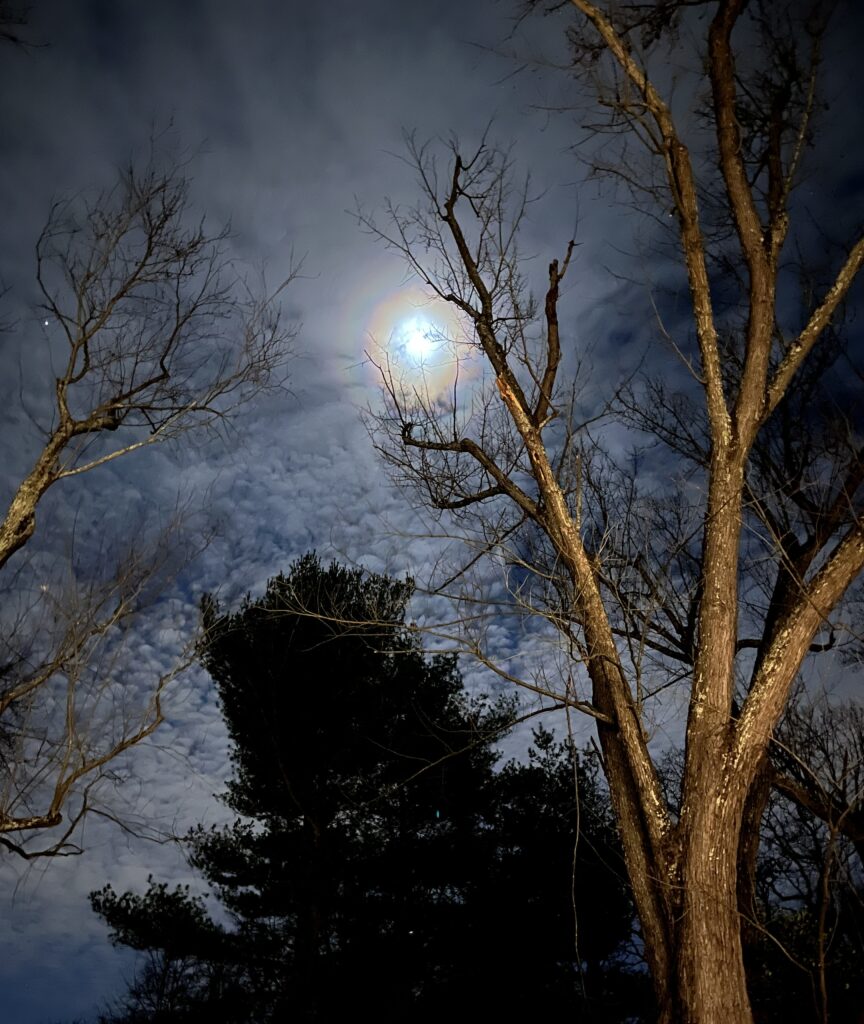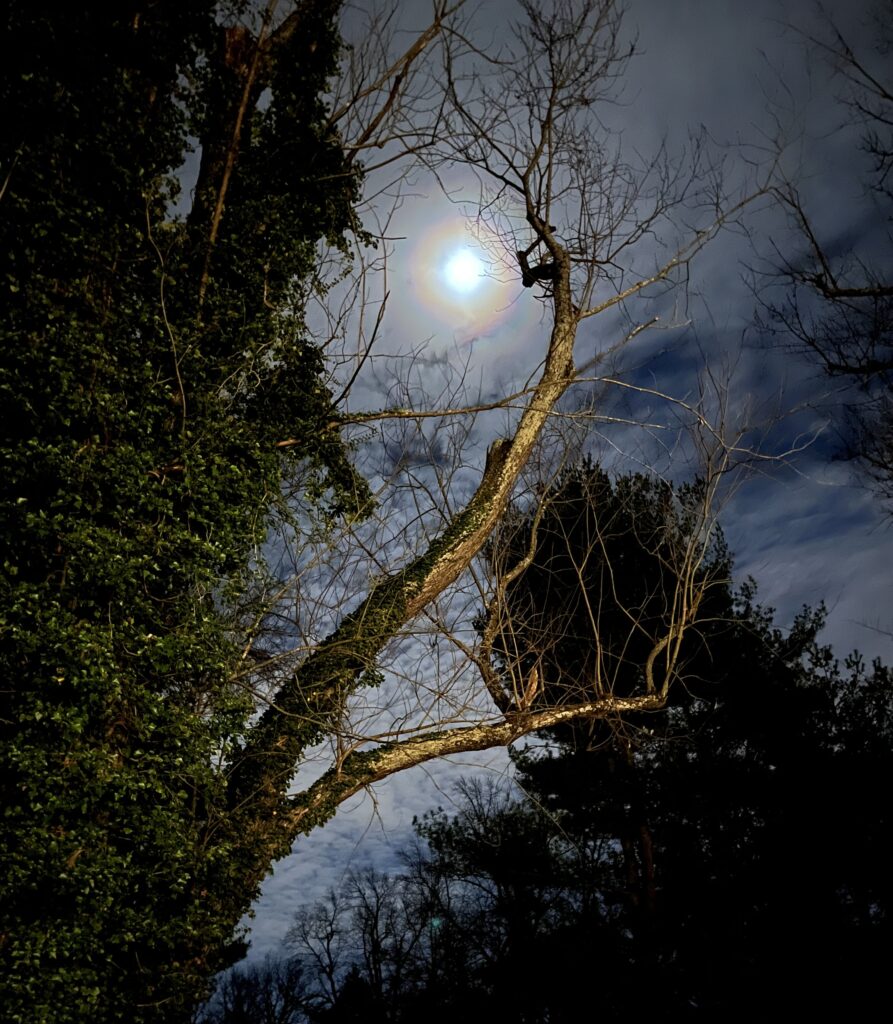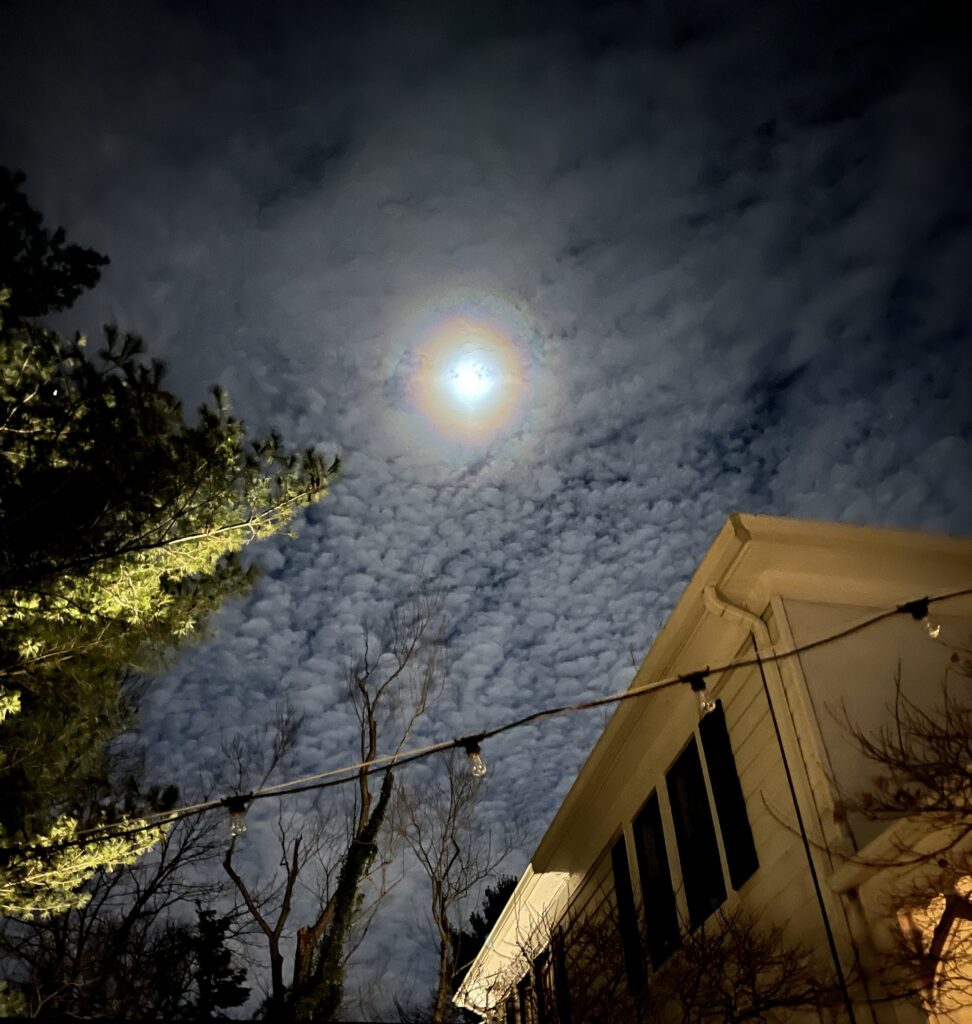Yesterday, as I was anticipating tonight’s longest night of the year, I thought about our deep-seated human need for light and warmth. Scarcity drives demand, and the short, dark, cold days of winter require us to feed the need through creative means. We devise inventive ways to kindle the fire indoors, to bring the comfort of light and heat into our homes. And possibly, we hope, into our hearts.
For some reason, I stepped outside. I saw the moon. And it was spectacular. Against a dark blue backdrop dotted with small white puffy clouds, the bright half-moon was encircled by a halo of iridescent rings. It looked rather like a glowing opal hovering in the sky. Late last month, during a chilly night walk, my daughter and I marveled at a wide pearly circle around the moon. It was lovely, but it lacked the dazzling colors that I witnessed last night.
What causes a ring around the moon? I’ve often wondered, but never sought out the answer. Now I know. To put it very simply, in terms I can comprehend, it’s produced by light shining through ice crystals high up in the atmosphere, and therefore more likely to occur in colder months.
I almost didn’t attempt a photo. I knew it wouldn’t come close to capturing the beauty I saw firsthand. But I gave it a try, and the resulting images were better than I had expected.
As winter descends and night falls way too early, I’m grateful that many rooms in our old farmhouse will soon be glowing softly with strands of miniature white lights. The day has become cloudy; the sky looks like a white sheet. It’s doubtful that a magical, rainbow-ringed moon will be visible tonight, on this longest night. But, as the old year ends and a new one begins, the vision of that strikingly haloed moon will remind me to look up and out on clear nights. It will prompt me to be ever thankful for a message I treasure always, but especially during these short, cold days. It’s the hope and promise of Christmas:
The light shines in the darkness, and the darkness can not overcome it.
Gospel of John, 1:5




